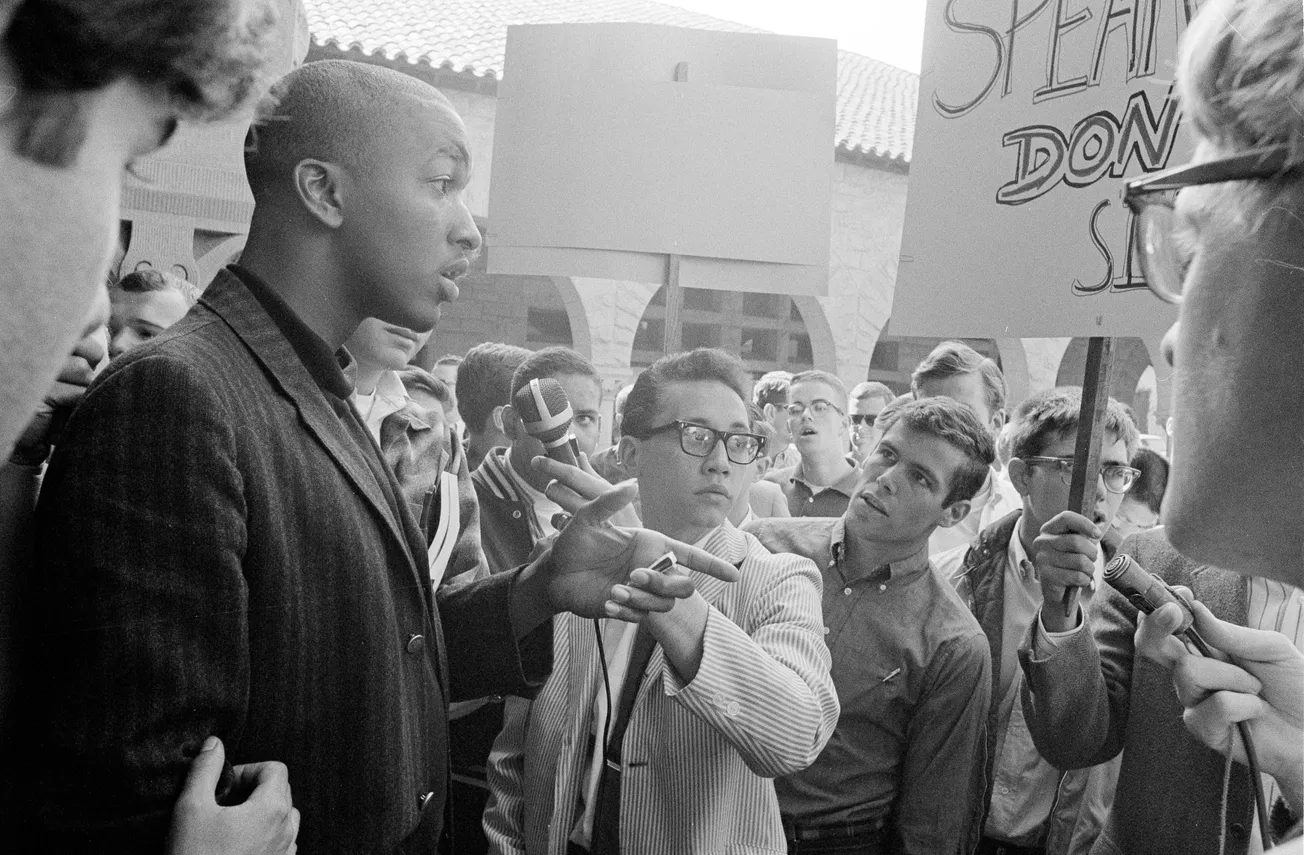Table of Contents
Ugh! Who needs those kooky libertarians and draconian conservatives at The Stanford Review. The Farm already copes with the Stanford College Republicans and the Hoover Institution, right?
The College Republicans have established a provocative niche. But, how many liberal students were engaged last fall by Robert Spencer? The Hoover Institution has world-renowned archives, publishes fantastic free content, and hosts a smattering of public events. But to most undergraduates, Hoover is an impenetrable fortress.
The Review offers students a scarce opportunity to wrestle with ideas from outside the Stanford bubble. Since its first volume, the paper has sought to quell name-calling and hysterics with rational debate. Flash forward three decades, and the rise of partisanship and identity politics make The Review more necessary than ever.
The student body is dominated by lefties. In a Stanford Daily poll before the 2016 election, 91.5 percent of students said “liberal” was the most popular political ideological among their peers. Only 7.4 percent identified as Republican. Nearly 85 percent voted for Hillary Clinton.
The faculty are similarly one-sided. Fortunately, some economics classes still have a libertarian bend, but good luck finding Stanford professors who openly critique affirmative action, defend the Second Amendment, or decry climate alarmism. Perhaps a physics professor in the bowels of the Engineering Quad sympathizes with the need for more sensible debate, but her lesson on Schrodinger’s equation won’t get students gunning to read Barry Goldwater’s “Conscience of a Conservative.”
The mid-lecture, anti-Trump quips are not really the salient problem. They are frequently apt and even witty, if only a little tired. Stanford’s lack of ideological diversity, however, limits students’ education and taints dialogue about campus issues. The Review fills the breach, driving intellectual counterculture.
Last volume, The Review covered administrative bloat, the Student Union’s so-called “Director of Academic Freedom,” the meal plan mandate, and the lack of humanities students in the first class of Knight-Hennessy Scholars. Editorials also examined national subjects, like Brett Kavanaugh’s appointment. Students aren’t likely to find these stories and opinions in the pages of The Daily or at dinner in Stern Dining. This volume, look out for coverage of Title IX reform and the University’s party restrictions; The Review will also build on its typical content with more satire and pieces which highlight positive developments on campus.
The paper will surprise students unfamiliar with its contrarianism. The first article of the new volume denounced Stanford’s ties to a Saudi technical college, since Riyadh “punishes the LGBTQ community, treats women as second class citizens… and stifles freedom of expression.” Wow, that author is one heartless right-winger!
The Review is not a panacea for the University’s dedication to the sedated, liberal orthodoxy. A more potent remedy would supplant curriculum. Freshmen, for example, would gain more by reading Adam Smith and W. E. B. Du Bois than by fulfilling the “Thinking Matters” requirement with classes like “Food Talks: The Language of Food.” In the meantime, The Review will continue to spur much-needed civil discourse on The Farm.
If you crave open-minded and contrarian discussion, The Review meets each week for thoughtful conversations, Mondays at 7pm in Old Union 220. See you there!









